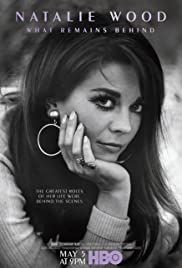
NATALIE WOOD: WHAT REMAINS BEHIND
US, 2020, 100 minutes, Colour.
Directed by Laurent Bouzereau.
This HBO documentary comes almost 4 decades after the death of actress, Natalie Wood, who died in a drowning accident in 1981. The film was produced by her stepdaughter, Natasha Gregson Wagner, a tribute to her mother.
There has always been a prurient curiosity, fostered by the tabloids and American magazines, that there was something suspicious about Natalie Wood’s death, a clash with her husband, Robert Wagner, the presence of her co-star in her last film, Brainstorm, Christopher Walken. This film is at pains to interview those connected. However, Natalie Wood’s younger sister, Lana Wood, maintains an opinion of foul play – and has contributed articles and interviews reaffirming her opinion. Lana Wood is dismissed by the other members of the family.
Natasha Gregson Wagner wants to present a tribute to her mother. She and the producers have been a great pains to find a great deal of footage of Natalie Wood when she was a baby, a small child, her acting roles (including a clip with Orson Welles claiming to be her first co-star, scenes from Miracle on 34th Street), her life as a young starlet, the transition with Rebel without a Cause, her meeting with Robert Wagner and their marriage. (Interestingly, there is no clip from one of her most famous films, The Searchers.)
Natasha Gregson Wagoner appears on screen, warm memories of her mother. Her stepsister, Katie Gregson, also appears and was close to the Wagners. Natalie Wood’s and Robert Wagner’s daughter, Courtney, is also interviewed, speaking warmly also about her mother.
However, the main interview is with Robert Wagner himself, still sprightly in his late 80s, speaking directly about the marriage, the difficulties, the separation, the divorce, his relationship with Mary Marshall (and her two sons by former husband Stanley Donen, the two men remain in close to the Wagoners, Peter Donen and living in their guest house). There is a great deal of footage from all these periods and interviews with Peter Donen and, with close friend Mia Farrow, with Robert Redford, playwright Mart Crowley.
Natalie Wood’s second husband, Richard Gregson, is also interviewed and speaks frankly about the marriage, the birth of Natasha and her growing up, his infidelity, the breakup of their marriage. He is in his late 80s being interviewed and is suffering from Parkinson’s.
So, in one sense, what remains of Natalie Wood are the happy memories and the film footage. But, the film includes extensive clips from many of her films, from those when she was a young child, to her emergence at the beginning of the 1960s as a star, Splendour in the Grass (and her relationship with Warren Beatty), All the Fine Cannibals (and tribute from George Hamilton), scenes from West Side Story and Gypsy, from the mid-60s, Inside Daisy Clover, This Property is Condemned, Love With the Proper Stranger, from later films like Bob and Carol and Ted and Alice (and comment from Elliot Gould). There are clips from her later films, after her being away from the screen for some years and wanting to be with her children, the television From Here to Eternity and The Last Married Couple in America (and tribute from George Segal), and Brainstorm.
The film is really in two parts, early years and films leading up to her death, then going back to her early childhood, comments about her father, her possessive mother prone to tantrums, building up once again to her death.
With this documentary almost 4 decades after her death, Natalie Wood belongs to memories of the older audiences – and to history for younger audiences.